Salt hacks are about to become your new best friend! Seriously, who knew that humble table salt, something we take for granted every day, could be such a powerhouse of DIY solutions? I’m constantly amazed by the sheer versatility of this simple ingredient, and I’m so excited to share some of my favorite salt hacks with you.
Salt has been valued for centuries, not just for its flavor-enhancing properties, but also for its preservative qualities. Think about ancient civilizations using salt to preserve food – it’s a testament to its enduring usefulness! But beyond the kitchen, salt has a surprising number of applications around the house, and that’s where these salt hacks come in.
Let’s face it, life can get messy, and sometimes, the usual cleaning products just don’t cut it. That’s where salt steps in to save the day! From tackling stubborn stains to freshening up your home, these DIY tricks are not only effective but also incredibly budget-friendly. Plus, who doesn’t love a good DIY project that uses ingredients you already have in your pantry? Get ready to unlock the hidden potential of salt and make your life a little bit easier (and cleaner!) with these amazing hacks.
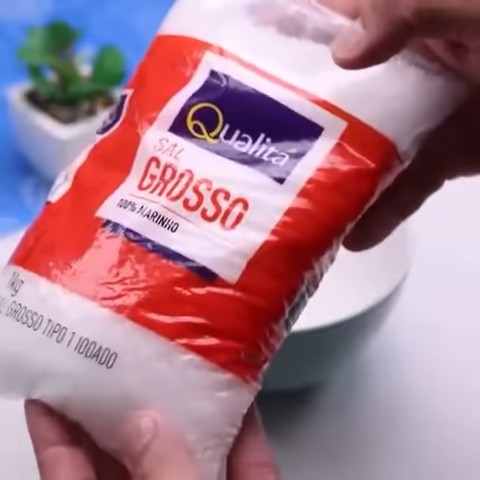
Unlocking the Magic of Salt: DIY Hacks for Everyday Life
Hey there, fellow DIY enthusiasts! Get ready to be amazed by the incredible versatility of something you probably have sitting in your pantry right now: salt! Yes, that humble little ingredient is so much more than just a flavor enhancer. I’m going to show you some fantastic DIY hacks using salt that will simplify your life and save you money. Let’s dive in!
Cleaning and Stain Removal Powerhouse
Salt’s abrasive texture and chemical properties make it a surprisingly effective cleaning agent. I’ve used these hacks for years, and they’ve saved me from countless messes.
Cleaning a Scorched Pot or Pan
Burnt food stuck to the bottom of your favorite pot? Don’t despair! Salt is your savior.
1. Pour a generous amount of salt into the pot or pan. I usually use about half a cup, but adjust based on the size of the burnt area.
2. Add just enough water to form a paste. You don’t want it too runny, just thick enough to coat the burnt residue.
3. Let it sit for several hours, or even overnight. This allows the salt to loosen the burnt food. I often leave it overnight for really stubborn messes.
4. Scrub with a non-abrasive sponge or cloth. You’ll be surprised how easily the burnt food comes off! Avoid steel wool, as it can scratch the surface.
5. Rinse thoroughly with soap and water. Your pot or pan should be sparkling clean!
Removing Red Wine Stains
Uh oh, spilled red wine on your carpet or tablecloth? Act fast! Salt can help prevent a permanent stain.
1. Immediately blot up as much of the wine as possible with a clean cloth or paper towel. The quicker you act, the better.
2. Cover the stain generously with salt. Make sure the entire stain is completely covered.
3. Let the salt sit for several hours, or overnight. The salt will absorb the wine. You’ll see it turn pinkish as it does its magic.
4. Vacuum up the salt.
5. If the stain persists, repeat the process or try a commercial stain remover. Sometimes, a second application of salt is all it takes.
Cleaning a Rusty Cast Iron Skillet
Cast iron skillets are amazing, but they can be prone to rust. Salt is a gentle yet effective way to remove rust without damaging the seasoning.
1. Pour a generous amount of coarse salt into the skillet. I prefer using kosher salt for this.
2. Use a dry cloth or paper towel to scrub the rusty areas with the salt. Apply firm pressure and scrub in a circular motion. The salt will act as a mild abrasive to remove the rust.
3. Rinse the skillet with hot water. Do not use soap, as it can strip the seasoning.
4. Dry the skillet thoroughly with a clean cloth.
5. Season the skillet immediately after cleaning. To season, coat the skillet with a thin layer of cooking oil (like vegetable or canola oil) and bake it in a preheated oven at 350°F (175°C) for one hour. This will help prevent future rust.
Brightening Dull Brass and Copper
Is your brass or copper looking a little tarnished? A simple salt paste can bring back its shine.
1. Make a paste of equal parts salt, flour, and white vinegar. Mix them together until you have a smooth paste.
2. Apply the paste to the tarnished brass or copper.
3. Let it sit for about 15-30 minutes.
4. Rinse with warm water and dry thoroughly with a soft cloth. Your brass or copper should be noticeably brighter!
Household Hacks with Salt
Beyond cleaning, salt can be used for a variety of other clever household hacks.
Testing Egg Freshness
Not sure if those eggs in your fridge are still good? Here’s a simple salt water test.
1. Fill a glass or bowl with water.
2. Add about two tablespoons of salt to the water and stir to dissolve.
3. Gently place the egg in the water.
4. Observe what happens:
* If the egg sinks and lies flat on its side, it’s fresh.
* If the egg sinks but stands on one end, it’s still good but should be used soon.
* If the egg floats, it’s bad and should be discarded.
The reason this works is that as an egg ages, air enters through the porous shell, making it more buoyant.
Keeping Cut Flowers Fresh Longer
Want to extend the life of your beautiful bouquet? Salt can help!
1. Add a pinch of salt to the water in the vase. Just a small amount is enough.
2. Stir to dissolve the salt.
3. Change the water every day or two, adding a fresh pinch of salt each time.
The salt helps to inhibit the growth of bacteria and fungi in the water, which can cause the flowers to wilt faster.
Preventing Ants
Ants invading your home? Salt can act as a natural deterrent.
1. Identify where the ants are entering your home. Look for cracks, crevices, or trails.
2. Sprinkle a line of salt along the ant trail or at the point of entry.
3. The ants will be deterred from crossing the salt barrier.
Salt disrupts the ants’ scent trails, making it difficult for them to navigate.
Cleaning Your Iron
A dirty iron can leave marks on your clothes. Salt can help clean the soleplate and remove residue.
1. Cover an ironing board or a heat-resistant surface with a piece of plain paper.
2. Sprinkle a generous amount of salt onto the paper.
3. Turn your iron on to the highest setting (without steam).
4. Run the hot iron over the salt-covered paper in a circular motion. The salt will help to loosen and remove any residue from the soleplate.
5. Wipe the soleplate with a clean, dry cloth. Be careful, as the iron will be hot.
Making Homemade Playdough
Need a fun activity for the kids? Make your own playdough with salt!
1. Combine 1 cup of flour, 1/2 cup of salt, 2 teaspoons of cream of tartar, and 1 cup of water in a saucepan.
2. Add 1 tablespoon of vegetable oil and food coloring (optional).
3. Cook over medium heat, stirring constantly, until the mixture forms a ball and pulls away from the sides of the pan.
4. Remove from heat and let cool slightly.
5. Knead the dough until smooth.
6. Store in an airtight container.
This homemade playdough is non-toxic and lasts for a long time.
Beauty and Personal Care Uses
Believe it or not, salt can also be incorporated into your beauty routine.
Exfoliating Body Scrub
Salt’s abrasive texture makes it a great natural exfoliator.
1. Mix equal parts salt and olive oil (or coconut oil) in a bowl.
2. Add a few drops of your favorite essential oil (optional). I like lavender or peppermint.
3. In the shower, gently massage the scrub onto your skin in a circular motion.
4. Rinse thoroughly with warm water.
This scrub will leave your skin feeling soft and smooth.
Soothing Sore Throat Gargle
A saltwater gargle can help relieve a sore throat.
1. Dissolve 1/2 teaspoon of salt in 8 ounces of warm water.
2. Gargle with the solution for 30 seconds, then spit it out.
3. Repeat several times a day.
The salt helps to reduce inflammation and kill bacteria in the throat.
Foot Soak for Tired Feet
Treat your tired feet to a relaxing salt soak.
1. Fill a basin with warm water.
2. Add 1/2 cup of Epsom salt (magnesium sulfate) or sea salt to the water.
3. Soak your feet for 15-20 minutes.
The salt helps to draw out toxins and reduce swelling, leaving your feet feeling refreshed.
Teeth Whitening (Use with Caution!)
While not a primary teeth whitening method, salt can help remove surface stains. Use this sparingly, as excessive use can damage tooth enamel.
1. Dip your toothbrush in salt.
2. Gently brush your teeth with the salt for about a minute.
3. Rinse thoroughly with water.
Only do this once or
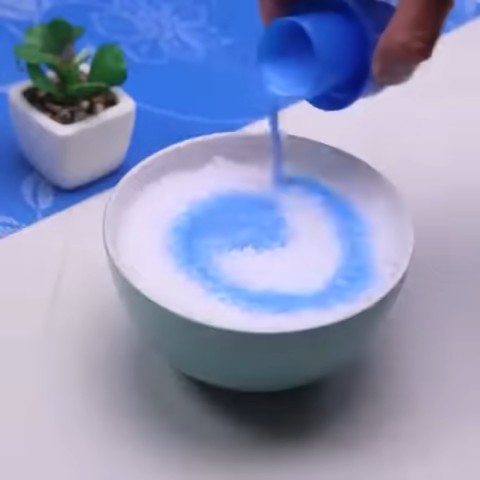
Conclusion
So, there you have it – a collection of simple yet incredibly effective salt hacks that can transform your everyday routines. From banishing stubborn stains to revitalizing your cleaning arsenal and even enhancing your culinary creations, the versatility of salt is truly astounding. These aren’t just fleeting trends; they’re time-tested solutions passed down through generations, now readily available to you.
Why is this DIY approach a must-try? Because it’s economical, eco-friendly, and empowering. You’re taking control of your household needs, reducing your reliance on harsh chemicals and expensive store-bought products. Plus, there’s a certain satisfaction that comes from knowing you’ve solved a problem with a simple, natural ingredient.
But the beauty of these salt hacks lies in their adaptability. Feel free to experiment and tailor them to your specific needs. For instance, instead of plain table salt, try using coarse sea salt for a more abrasive cleaning action on tough grime. Or, infuse your salt scrub with essential oils like lavender or eucalyptus for an added aromatherapy boost. You could even create a flavored salt blend by combining salt with dried herbs and spices, perfect for seasoning grilled meats or roasted vegetables. The possibilities are endless!
Don’t be afraid to get creative and discover new ways to harness the power of salt. We encourage you to try these DIY tricks and witness the remarkable results for yourself. Whether you’re tackling a burnt pan, preserving cut apples, or simply looking for a natural way to freshen up your home, salt is your secret weapon.
We’re confident that once you experience the magic of these salt hacks, you’ll wonder how you ever lived without them. So, ditch the harsh chemicals, embrace the simplicity of salt, and unlock a world of possibilities.
Now, we want to hear from you! Share your experiences with these salt hacks in the comments below. Did you discover a new use for salt that we haven’t mentioned? What variations did you try, and how did they work out? Let’s create a community of salt enthusiasts and learn from each other’s successes. Your insights could inspire others to embrace the power of salt hacks and transform their daily lives.
Frequently Asked Questions (FAQs)
What kind of salt is best for these hacks?
The type of salt you use can depend on the specific hack. For most cleaning and general household purposes, plain table salt or kosher salt will work perfectly fine. These are readily available and relatively inexpensive. However, for more abrasive cleaning tasks, such as scrubbing burnt pots or pans, coarse sea salt or rock salt might be more effective due to their larger granules. For culinary applications, consider using sea salt, kosher salt, or Himalayan pink salt, as they offer different flavor profiles and textures. Epsom salt, while technically a salt compound, is magnesium sulfate and is best suited for bath soaks and gardening purposes, not for cooking or general cleaning.
Are these salt hacks safe for all surfaces?
While salt is generally a safe and natural cleaning agent, it’s essential to exercise caution when using it on certain surfaces. Avoid using salt on delicate or easily scratched materials like polished wood, painted surfaces, or certain types of plastic. Always test a small, inconspicuous area first to ensure that the salt doesn’t cause any damage or discoloration. For sensitive surfaces, consider diluting the salt with water or using a gentler cleaning method altogether. When in doubt, consult the manufacturer’s instructions for the specific surface you’re cleaning.
Can I use these salt hacks on my skin?
Salt can be beneficial for the skin when used properly. Salt scrubs can help exfoliate dead skin cells, improve circulation, and leave your skin feeling smooth and refreshed. However, it’s crucial to use fine-grain salt and avoid scrubbing too vigorously, as this can irritate the skin. If you have sensitive skin, consider mixing the salt with a moisturizing oil like coconut oil or olive oil to reduce its abrasiveness. Avoid using salt on open wounds or irritated skin. Epsom salt baths can also be beneficial for soothing sore muscles and reducing inflammation. Always consult with a dermatologist if you have any concerns about using salt on your skin.
How long will these salt hacks last?
The longevity of these salt hacks depends on the specific application. For cleaning purposes, the effects are usually immediate and long-lasting, as long as the surface is properly maintained. For food preservation, such as pickling or curing, the salt helps to inhibit the growth of bacteria and extend the shelf life of the food. However, it’s essential to follow proper food safety guidelines and storage instructions to ensure that the food remains safe to consume. For other applications, such as using salt to absorb spills or deodorize, the effects will last until the salt is saturated or needs to be replaced.
What are some other creative uses for salt?
Beyond the hacks mentioned in the article, salt has a wide range of other creative uses. You can use salt to:
* **Keep cut flowers fresh:** Add a pinch of salt to the water in your vase to help keep your cut flowers fresh for longer.
* **Prevent mold and mildew:** Sprinkle salt in damp areas like bathrooms or basements to help absorb moisture and prevent the growth of mold and mildew.
* **Clean your iron:** Sprinkle salt on a clean cotton cloth and iron over it to remove residue and buildup from your iron.
* **Remove rust:** Make a paste of salt and lemon juice and apply it to rusty surfaces to help remove rust.
* **Extinguish grease fires:** Pour salt directly onto a grease fire to smother the flames. Never use water, as it can cause the fire to spread.
* **Clean your refrigerator:** Wipe down the inside of your refrigerator with a solution of salt and water to help remove odors and stains.
* **De-ice your sidewalks:** Sprinkle salt on icy sidewalks and driveways to help melt the ice and prevent slips and falls.
Is there any environmental impact of using salt?
While salt is a natural substance, excessive use can have some environmental impacts. When used for de-icing roads, salt can contaminate groundwater and harm aquatic life. It can also damage vegetation and corrode infrastructure. To minimize the environmental impact of salt, use it sparingly and consider alternative de-icing methods, such as sand or gravel. When using salt for other purposes, dispose of it properly and avoid flushing it down the drain, as this can contaminate water sources.
Can I use flavored salts for these hacks?
While plain salt is generally recommended for most cleaning and household hacks, you can experiment with flavored salts for certain culinary applications. For example, you can use flavored salts to season grilled meats, roasted vegetables, or homemade snacks. However, be mindful of the ingredients in the flavored salt and avoid using it on surfaces that could be stained or damaged by the added spices or herbs. Always test a small area first to ensure that the flavored salt doesn’t cause any adverse effects.
What if the salt hack doesn’t work for me?
While these salt hacks are generally effective, results may vary depending on the specific situation and the type of salt used. If a particular hack doesn’t work for you, try adjusting the amount of salt, the application method, or the type of salt you’re using. You can also try combining the salt with other cleaning agents or natural remedies to enhance its effectiveness. If you’re still not satisfied with the results, consider seeking professional help or consulting with a cleaning expert. Remember that experimentation is key, and what works for one person may not work for another.

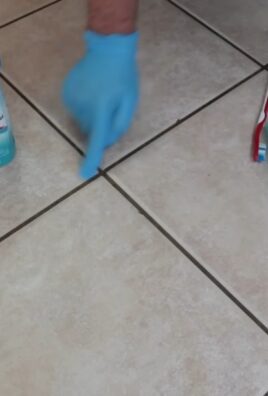
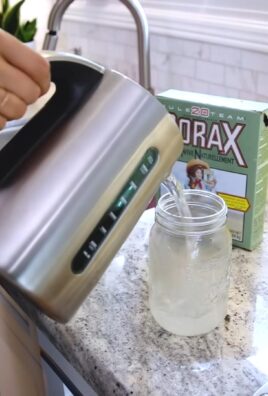
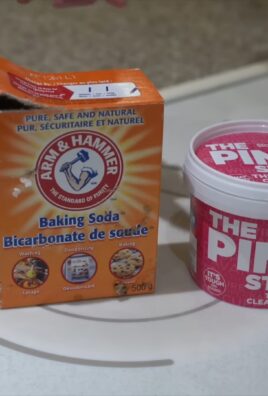
Leave a Comment